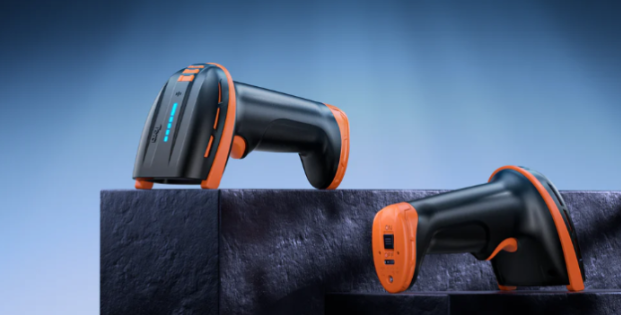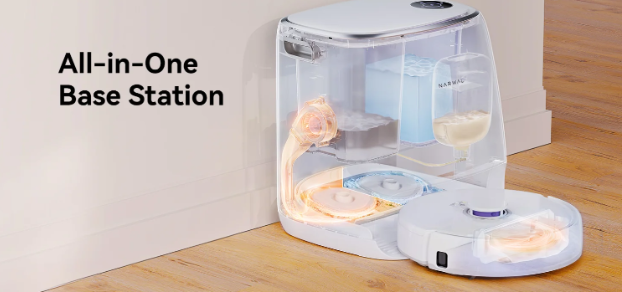The Impact of Barcode Scanning on Retail Inventory Management
Manual inventory management is frequently a source of inefficiency and errors. Studies indicate that a substantial portion of inventory mistakes originates from manual data entry. These errors can lead to delays in shipments, customer dissatisfaction, and a reduction in earnings. In contrast, inventory scanners resolve these challenges by automating the tracking process, which minimizes human…
Manual inventory management is frequently a source of inefficiency and errors. Studies indicate that a substantial portion of inventory mistakes originates from manual data entry. These errors can lead to delays in shipments, customer dissatisfaction, and a reduction in earnings. In contrast, inventory scanners resolve these challenges by automating the tracking process, which minimizes human mistakes and offers immediate updates on stock levels.
Barcode scanning technology is fundamental to modernizing retail operations. It provides a reliable and automated method for tracking and managing products. This article explores how these devices function, the significant benefits they offer to businesses, and how they optimize retail inventory management for enhanced productivity and accuracy. By understanding their impact, retailers can make informed decisions to improve their operational workflows.
How Barcode Scanners Operate
An inventory scanner is a device designed to read barcodes and QR codes attached to products. When a code is scanned, the device instantly captures the stored information. It then transmits this data to a central inventory management system, which updates stock records in real-time. This ensures that businesses have a continuously accurate count of inventory levels and product locations.
The mechanics behind this process are straightforward. The scanner utilizes optical sensors that project a beam of light onto the barcode. The sensors interpret the pattern of reflected light from the barcode’s lines and spaces. This pattern is then converted into digital data that the inventory software can understand and process. This technology ensures that every item, from small consumer goods to large warehouse pallets, is tracked with precision.
The Transformative Benefits of Barcode Scanning
The shift from manual methods to automated barcode scanning brings a host of clear advantages for retail businesses. With increasing consumer demands and market competition, accurate inventory management is no longer optional. It is a critical component of a successful retail strategy. The following benefits highlight the positive impact of adopting this technology.
Faster and More Efficient Operations
Manual inventory handling is both time-consuming and labor-intensive. Inventory scanners automate this entire process, allowing for real-time updates with a single scan. Reports show that barcode scanners can dramatically reduce the time spent on inventory counting. This efficiency gain translates directly into faster order fulfillment and smoother overall operations.
In a retail environment, this speed is crucial. Scanners enable staff to update stock levels instantly, ensuring that popular products are restocked quickly. During peak sales seasons, when every moment counts, the time saved from manual counting can be redirected toward customer service and other vital tasks. This streamlined process keeps the business moving forward efficiently.
Reduced Risk of Human Error
Manual data entry is inherently prone to human error, which can lead to significant stock discrepancies and unreliable data. Barcode scanners eliminate these mistakes by automating the data capture process. This guarantees that inventory updates are accurate and reflect real-time transactions. Case studies have shown that implementing automated inventory systems can cut error rates significantly.
For example, in a warehouse setting, accurate picking and packing are essential. Using a scanner ensures the correct items are selected for shipment, which minimizes costly returns and prevents stockouts caused by inaccurate records. This level of precision is difficult to achieve with manual systems alone.
Significant Cost Savings
Although there is an upfront investment in scanning hardware and software, the long-term financial savings are substantial. Businesses can achieve major reductions in operational costs by lowering labor requirements, preventing errors, and optimizing stock levels. Scanners help prevent both overstocking and understocking, which ties up capital and leads to lost sales. By automating tasks, businesses also reduce the costs associated with manual labor.
Improved Customer Experience
Customer satisfaction is closely linked to inventory accuracy. Barcode scanners enable faster and more precise order fulfillment, which reduces the likelihood of stockouts and shipping delays. When customers consistently receive the correct products on time, it builds trust and loyalty. Companies that automate their inventory management often report notable improvements in customer satisfaction metrics. For both e-commerce and physical retail stores, this is a key differentiator.
Enhanced Inventory Visibility
Inventory scanners provide businesses with complete, real-time insight into their stock. With automated updates, managers can make informed decisions to prevent stockouts and avoid carrying excess inventory. Businesses using scanners often report up to 30% more accurate inventory data compared to those relying on manual tracking. This enhanced visibility is especially valuable for retailers with multiple locations, as it provides a unified view of stock across the entire organization.
Integrating Scanners into Modern Retail Workflows
Successfully adopting barcode scanning technology involves more than just purchasing the hardware. It requires thoughtful integration into existing systems and workflows to maximize its potential.
Seamless System Integration
A critical factor for success is ensuring the scanner is compatible with your current systems. This includes iPads, Point of Sale (POS) terminals, and inventory management software. Seamless integration enables real-time data synchronization between devices and platforms. This creates a cohesive ecosystem where information flows freely, eliminating the need for redundant manual data entry and reducing the chance of discrepancies between systems.
Key Features for Retail Environments
The specific needs of a retail environment should guide the selection of a scanner. In high-volume settings, scanning speed and range are paramount for maintaining efficiency. For operations that run all day, long battery life is crucial to avoid interruptions. Durability is also a key consideration, as devices used in warehouses or on busy sales floors must be able to withstand occasional drops and demanding conditions.
To ensure smooth adoption, it is best to choose scanners that are intuitive and feature a simple, plug-and-play setup. This approach minimizes the time required for employee training and facilitates a quick integration into daily tasks. Furthermore, as a business grows, its inventory management needs become more complex. Barcode scanning systems are inherently scalable, making it easy to handle increasing stock volumes and manage multiple store or warehouse locations. This adaptability allows businesses to expand without being held back by their operational processes. Systems that offer straightforward integration, such as Tera barcode scanners, can be particularly beneficial, allowing for a smooth transition and immediate gains in productivity.
Conclusion
The adoption of barcode scanners fundamentally transforms retail inventory management. This technology streamlines operations, enhances accuracy, and contributes directly to greater customer satisfaction. By providing real-time data and minimizing human error, scanners empower businesses to remain competitive and agile in a fast-paced market. Automating inventory updates allows teams to shift their focus from tedious manual tasks to strategic initiatives that drive growth and profitability. Embracing barcode scanning is a definitive step toward operational excellence.





